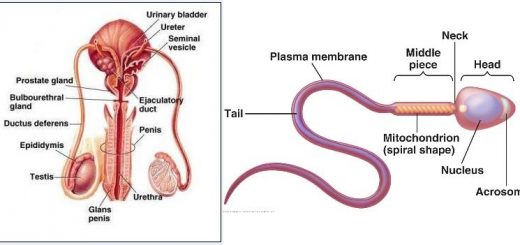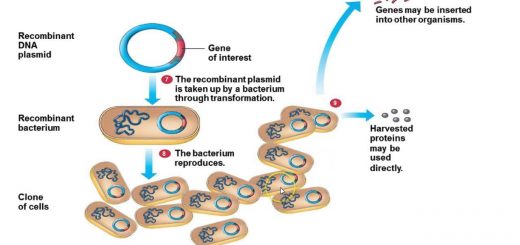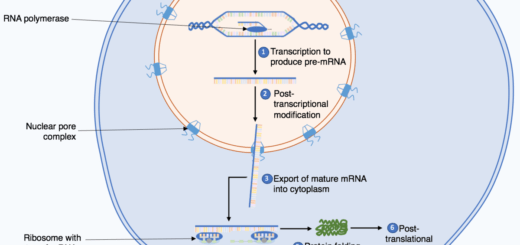Types of asexual reproduction (Binary fission, Budding, Regeneration, Sporogony, Parthenogenesis & Tissues culture)
Binary fission is common in the most primitive unicellular organisms such as Simple algae, Bacteria, and many protozoans such as Amoeba and Paramecium, Binary fission happens under different conditions, In suitable conditions, The nucleus divides by mitosis, The cell (that represents the unicellular organism) divides into 2 cells, where each one of them becomes a new individual.
Binary fission
In unsuitable conditions, Amoeba (unicellular organisms) secretes a chitinous coat around its body for protection, It divides within that coat several times by repeated binary fission to produce many young Amoeba, The young Amoeba are released from the cyst once the surrounding conditions are improved.
Budding
Some unicellular organisms, as well as some multicellular ones, reproduce by budding as follows:
In unicellular organisms
- The bud arises as a lateral projection on the original cell.
- The nucleus divides mitotically into 2 nuclei, where one of them remains in the parent cell, while the other moves towards the bud.
- The bud grows gradually, then it may remain connected with the parent cell till its full growth, then it separates from it or continues in its connection with the parent cell, forming cellular colonies with the other growing buds.
Example: Yeast fungus
In multicellular organisms
- The bud grows as a small cellular protrusion from one side of the body, due to the division of the interstitial cells and their differentiation into a bud.
- The bud grows gradually to resemble the parent entirely.
- The new individual usually separates to start its life independently.
Examples: Hydra, Sponges.
The sponges and Hydra reproduce sexually besides their ability to reproduce asexually by budding and regeneration.
Regeneration
This method is common in many plants, Some animals such as sponges and Hydra and sea stars (starfish), and Some worms such as Planaria, The capacity for regeneration decreases by increasing the animals’ evolution.
Higher animals (regeneration for compensation)
Regeneration is not considered as a reproduction in some organisms, where it is limited to compensating the lost parts of their body, due to an accident or a rupture of the tissues.
Examples:
- Higher vertebrates: regeneration never exceeds the healing of wounds, especially those located in the skin, blood vessels and muscles.
- Some crustaceans and amphibians: regeneration is limited to the compensation of the cut parts only.
Lower animals (regeneration for reproduction)
Regeneration is considered as a reproduction in some organisms, as any cut part will grow into a new individual.
Examples:
- Hydra can regenerate as if it is cut into several transverse pieces, where each part will grow into a new individual.
- Planaria (common freshwater flatworm) can regenerate, even if it is cut into several transverse pieces or 2 longitudinal parts, where each part will grow into a new individual.
- Seastar (Starfish) can regenerate, if one of its arms is cut with a piece of its central disc to a full sea star within a short time, this type of sea stars forms a danger on the pearl mussels since the one sea star can devour about ten mussels daily including the pearl, therefore the breeders of those mussels in the pearl farms were collecting the sea stars, tearing them up into pieces, and then throw them back into the sea, Although they tried to get rid of them, they were unintentionally helping in their reproduction, so that they resorted to burn them.
Sporogony
Some primitive plants reproduce using a single cell called spores that are modified to grow directly into a complete plant.
A spore is formed of cytoplasm with a little amount of water, and a nucleus and is surrounded by a thick coat, It is a single cell that modified to grow directly into a new complete organism under suitable conditions for its growth such as in some primitive plants.
Sporogony stages:
- After the spore maturation, it liberates from the mother plant to distribute in the air.
- When it reaches a suitable medium for growth, it absorbs water, and its coat ruptures.
- It divides several times by mitosis, till it grows into a new individual.
Examples: Many fungi such as bread mold and mushroom, Some algae and ferns.
Advantages of sporogony:
- Quick propagation.
- Tolerance to hard conditions.
- Distribution to distant regions.
Parthenogenesis
Parthenogenesis is the ability of the ovum to develop into a new individual without being fertilized by a male gamete, Parthenogenesis occurs in several worms, crustaceans & insects.
Parthenogenesis is considered a special kind of asexual reproduction, where the progeny comes only from one parent only which is the mother’s gamete, Parthenogenesis can happen naturally or artificially as follows.
Natural parthenogenesis
Examples:
Honey bee: the queen produces the eggs by meiotic division, where:
- Some eggs grow by parthenogenesis and develop without fertilization (asexual reproduction), forming drones that are haploid (n).
- Some others develop after fertilization (sexual reproduction) to form the queen and workers that are diploid (2n).
Aphid insect: the eggs result from a mitotic division (without fertilization), where they develop into diploid (2n) individuals.
Artificial parthenogenesis
Examples:
Frog and sea star: Parthenogenesis has been induced artificially by activating the eggs through their exposure to thermal or electric shock or radiation some salt or agitation or pricking with a needle, These stimuli lead to the duplication of the chromosomes without fertilization, forming new individuals that are identical to their mother.
Rabbits: by using stimulants that are similar to the previous stimuli to form early embryonic stages of rabbits from their ova.
Tissues culture
Scientists carry out experiments on animal and plant tissue culture, Tissues culture is the growth of living tissue (its cells contain the whole genetic information) in a proper semi-natural nutritive medium and following its tissue differentiation and progress into a fully developed organism.
Experiment (1) on the carrot plant:
Separation of small pieces of carrot plant in glass tubes containing coconut milk (which comprises the whole plant hormones and nutrient elements that are necessary for plant growth), then these pieces began to grow and differentiate into a full carrot plant.
Separation of some cells from the same plant tissues and cultivated them by the same method to obtain a whole plant.
Experiment (2) on tobacco plant:
Separation of some cells from tobacco leaves and cultivating them by the same previous method so that we can obtain a full tobacco plant.
The scientific idea for plant tissue culture: Any somatic cell in the plant that comprises the whole genetic information can develop into a full plant, if it is cultivated in a proper nutritive medium, containing the plant hormones with a certain ratio.
The importance of tissue culture
- Propagation of rare plants or those with desirable strains or more resistant to the diseases.
- Shortening the time needed for growing and increasing the crops.
- Solving the food problems in general.
- Controlling the time of tissue culture, where the selected tissues for such culture can be preserved in liquid nitrogen for a long period to keep them alive and maintain their vitality until their cultivation.
Methods of reproduction in living organisms (Asexual reproduction & Sexual reproduction)
Reproduction, Types of sexual reproduction (Conjugation, Reproduction by sexual gametes)



